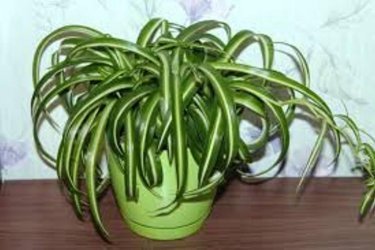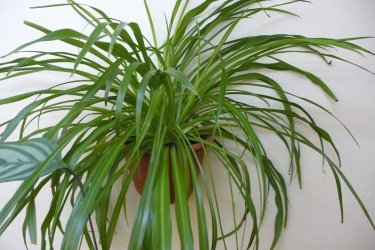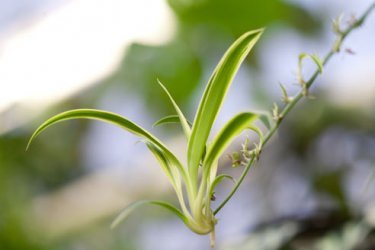Chlorophytum
Many gardeners adore this plant: growing chlorophytum does not present any difficulty; with minimal effort and time, you can get a very beautiful flower.
It belongs to the genus Liliaceae; today there are about 250 species of chlorophytum. The name Chlorophytum itself is translated as Green Plant.
The plant is grown as an hanging plant, sometimes in a group with other indoor flowers; it fits perfectly into different interior styles.
The benefits of chlorophytum include the ability to:
- purify the air in the room, the plant absorbs carbon monoxide, carbon dioxide, toxic impurities present in the environment;
- humidify the air due to excess moisture accumulating in the leaves;
- destroy pathogenic microorganisms;
- create an emotional atmosphere comfortable for a person in the house by neutralizing negative energy.
From the articles in this section you will learn about the most popular varieties of chlorophytum:
- crested;
- curly;
- blue pearls;
- the reflection of the flame and the orange green;
- Ocean, Cape and rare Laxume variety.
Planting, choosing a pot and soil for chlorophytum
These moments are very important; the development and growth activity of your green pet will depend on how correct the choice you make.
The soil mixture should consist of:
- turf soil - 2 parts;
- sand - 1 part;
- humus - 2 parts;
- leaf soil - 2 parts.
A pot for planting should be chosen with a large diameter, but not deep.
When planting a small layer, it should be taken into account that the flower grows very quickly, i.e. there will be no extra space.
The best material for a pot is ceramics or plastic; these materials are quite durable, do not absorb moisture, and the roots of moisture-loving plants are more comfortable in such containers.
Caring for chlorophytum
To green pet looked cheerful, you will need to provide high-quality lighting. Direct sunlight should not fall on the leaves; the light should be bright but diffused. The best places for placement are east and west windows.
Keeping temperature is room temperature, in winter it should not fall below + 10 C.
Watering is required systematically, abundantly in summer. In winter, watering is done less frequently; the need for moistening is emphasized - allowing the soil to dry out to a quarter of the depth of the pot.
For fertilizing, it is recommended to use organic and mineral fertilizers; the time for fertilizing is spring-summer.
In winter, the plant is dormant and does not require additional nutrients.
Transplantation and propagation
The best time for replanting is early spring; young bushes need annual replanting; an adult plant is replanted once every 3 years.
The plant is propagated by layering, the option of propagation by seeds is quite complex and problematic.
Since the plant is susceptible to some putrefactive diseases, it would be useful to familiarize yourself with information on how to revive chlorophytum and rejuvenate it.



